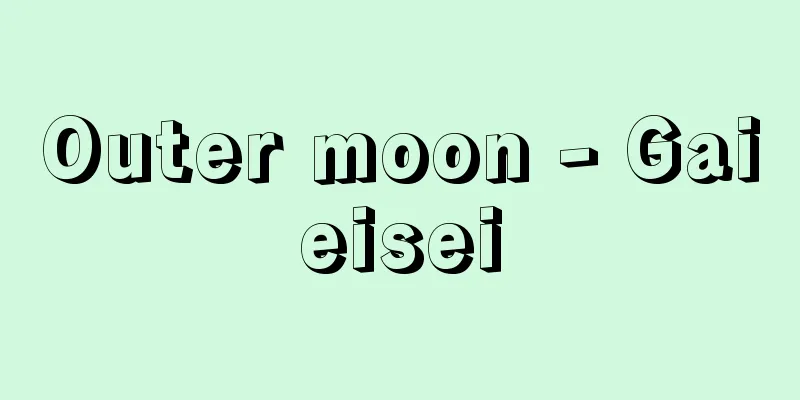Muroji Temple

|
It is the head temple of the Muroji school of the Shingon sect (formerly the Buzan school of the Shingon sect) in Muro, Uda city, Nara prefecture. It is called Muro-san Shichi-in. The mountain name is Muro-san. It is also called Ben-issan (Ben-issan is an abbreviation of Muro). The principal image is Nyoirin Kannon. It is said to have been founded by En no Ozunu at the imperial decree of Emperor Tenmu in 681 (the 10th year of the reign of Emperor Tenmu). It is said that the temple was built by Kenkei of Kofuku-ji Temple between the end of the Nara period and the beginning of the Heian period, and at the time it was the betto-jingu temple of Muro Ryuketsu-jinja, the god of rain. During the Tencho era (824-834), the temple buildings were restored by Kukai. During the Edo period, the shogun Tokugawa Tsunayoshi became a follower of the temple, and Ryuko of Gokokuin restored it. Since its founding, it had a close relationship with Kofuku-ji Temple, but it was separated by order of Tsunayoshi's mother, Keishoin, and became part of the Shingon sect of Buddhism, Tozan-ha. Since ancient times, women have been allowed to worship at the temple, and it has come to be affectionately known as Women's Koya. [Yukatsu Miyasaka] Cultural AssetsThe temple grounds are located on a steep 400-meter mountainside, so the layout of the temple buildings is relatively irregular and the buildings are small, but the Golden Hall dates back to the early Heian period, the five-story pagoda from the Nara period when the temple was originally built, and the Main Hall (Kanjodo) from the Kamakura period, and all are national treasures. The main hall is divided into an inner and outer sanctuary, and the wall panel at the rear of the inner sanctuary features a mural of the Taishakuten Mandala. It houses a wooden statue of Shaka Nyorai (standing), a wooden statue of Eleven-Headed Kannon (standing), a wooden statue of Seated Shaka Nyorai (seated), a wooden statue of Seated Nyoirin Kannon (standing), a wooden statue of Yakushi Nyorai (standing), and a wooden statue of Standing Manjusri Bodhisattva (standing) (all designated as Important Cultural Properties by the National Government), all in the Jōgan style. The five-story pagoda is a beautiful 16.18m-tall small tower with a cypress bark roof, and is known as the "tower built in one night by Kobo Daishi." The five-story pagoda was severely damaged by Typhoon No. 7 in 1998, but restoration work was completed in 2000. The main hall is a gabled roof style building from the mid-Kamakura period, and houses a statue of Nyoirin Kannon, said to have been made by Kukai. The Miei-do Hall (inner sanctuary) is also a Kamakura-period building that houses a statue of Kobo Daishi. The Miroku-do Hall, which was relocated from Denpo-in Temple in Nara's Kofuku-ji Temple, houses the principal image of Maitreya Bodhisattva (a Tang-style altar statue, Important Cultural Property) and a seated Shaka Nyorai statue (National Treasure). Other important cultural properties include the wooden standing statues of the Twelve Heavenly Generals (Kamakura period), the standing Jizo Bodhisattva (early Heian period), two stone pagodas (prayer towers), a five-ringed pagoda, and two large altars on the summit of Nyoi-san Mountain. The temple is home to many treasures, including several caves and ponds, known as Muro's Nine Holes (Hakkai). There is also a colony of warm-climate ferns, a national natural monument, and Tsukune Rock, the rock from which the Buddhas are said to have appeared. The small hill to the west of the temple grounds is called Nyoi-san, and it is said that Kukai buried the Nyoi-hoju jewel there after returning from Tang Dynasty China. [Yukatsu Miyasaka] "Muro-ji Temple" by Momoo Kitagawa (1963, Chuokoron-Bijutsu Shuppan)" ▽ "A Study of the History of Muro-ji Temple" by Kuihito Ikeda (1979, Gannando Shoten)" ▽ "The Complete Works of Domon Ken 5: Women at Koyasan Muro-ji Temple" (1984, Shogakukan) [Reference] | |Source: Shogakukan Encyclopedia Nipponica About Encyclopedia Nipponica Information | Legend |
|
奈良県宇陀(うだ)市室生にある真言(しんごん)宗室生寺派の大本山(もと真言宗豊山(ぶざん)派)。室生山悉知(しっち)院という。山号は檉生山(むろうさん)。宀一山(べんいっさん)(宀一は室生の略)ともいう。本尊は如意輪観音(にょいりんかんのん)。681年(天武天皇10)に天武(てんむ)天皇の勅願で役小角(えんのおづぬ)が開創したと伝える。奈良末期から平安初期にかけて興福寺の賢憬(けんけい)が堂宇を建立したといわれ、当時、祈雨の神の室生竜穴(りゅうけつ)神の別当(べっとう)神宮寺であった。天長(てんちょう)年間(824~834)空海によって諸堂塔が再興された。江戸時代に将軍徳川綱吉(つなよし)の帰依(きえ)があり、護国院の隆光(りゅうこう)が再興した。 創建以来、興福寺との関係は密接であったが、綱吉の母桂昌院(けいしょういん)の命令で分離し、新義真言宗豊山派となった。古来、女性の参拝が許されたので、女人高野(こうや)とよばれて親しまれてきた。 [宮坂宥勝] 文化財寺域は急竣(きゅうしゅん)な400メートルの山腹にあるので伽藍(がらん)の配置は比較的不ぞろいで、また建物も小型であるが、金堂は平安初期、五重塔は創建当初の奈良時代、本堂(灌頂(かんじょう)堂)は鎌倉時代の遺構を伝え、いずれも国宝である。 金堂は内(ない)・外陣(げじん)に分かれ、内陣後方の羽目板には帝釈天曼荼羅(たいしゃくてんまんだら)の壁画が描かれ、木造釈迦如来(しゃかにょらい)立像、木造十一面観音立像、木造釈迦如来坐像(ざぞう)(以上国宝)、木造如意輪観音坐像、木造薬師如来立像、木造文殊菩薩(もんじゅぼさつ)立像(以上国重文)など貞観(じょうがん)様式の仏像を安置する。五重塔は檜皮葺(ひわだぶ)きの高さ16.18メートルの美しい小塔で「弘法大師一夜(こうぼうだいしいちや)造りの塔」として知られる。1998年(平成10)の台風7号で五重塔は大きく損傷したが、2000年に復興工事が完了した。本堂は鎌倉中期の入母屋(いりもや)造で、空海作と伝える如意輪観音像を安置する。 御影(みえい)堂(奥の院)も鎌倉時代の建物で弘法大師像を安置する。奈良興福寺の伝法院を移築した弥勒(みろく)堂には本尊の弥勒菩薩像(唐式の檀像(だんぞう)、重文)と釈迦如来坐像(国宝)がある。このほか、木造十二神将立像(鎌倉時代)、同地蔵菩薩立像(平安初期)、如意山頂の2基の石塔(納経塔)、五輪塔、両部大壇具などが重文に指定され、寺宝は多い。境内には洞穴や池がいくつかあり、室生の九穴(けつ)八海という。国天然記念物の暖地性シダ群落、諸仏出現の岩と伝えられるつくね岩などもある。寺域の西の小山は如意(にょい)山といい、空海が唐から帰朝後に如意宝珠を埋めたと伝えられる。 [宮坂宥勝] 『北川桃雄著『室生寺』(1963・中央公論美術出版)』▽『逵日出典著『室生寺史の研究』(1979・巌南堂書店)』▽『『土門拳全集5 女人高野室生寺』(1984・小学館)』 [参照項目] | |出典 小学館 日本大百科全書(ニッポニカ)日本大百科全書(ニッポニカ)について 情報 | 凡例 |
Recommend
Peach splitting - Momoware
〘 noun 〙 A type of hairstyle worn by women. Hair g...
N-Bromosuccinimide - Bromosuccinimide
1-bromo-2,5-pyrrolidinedione. C 4 H 4 NO 2 Br (17...
Thalictrum kiusianum (English spelling) Thalictrum kiusianum
…[Michio Tamura]. … *Some of the terminology that...
Plataspidae
…A general term for insects in the family Platasp...
light sense
…In animals with two or more types of light-sensi...
Ebonite - Ebonite (English spelling)
A resinous substance obtained by adding 30-40 par...
Fashion god - Hayarigami
A general term for gods and Buddhas that suddenly...
Syracuse
A port city on the southeast coast of Sicily in so...
Sound Edition - Otohen
...A completely edited "all-rush" is ma...
Sindhi (English spelling)
...There is a considerable movement of population...
Yoshimochi Ashikaga
Year of death: 1428.2.3 (1st January 18th) Year of...
Hidetaka Kiyohara
⇒ Hidekata Funahashi Source: Kodansha Digital Japa...
Delta modulation - Deltahencho (English spelling) ⊿‐modulation
It is a method of converting analog signals such a...
Nanchang Uprising
The first armed uprising led by the Chinese Commun...
Mechanics
This is the study of the relative motion of machi...







![Kiire [town] - Kiire](/upload/images/67cb4e069f58b.webp)

